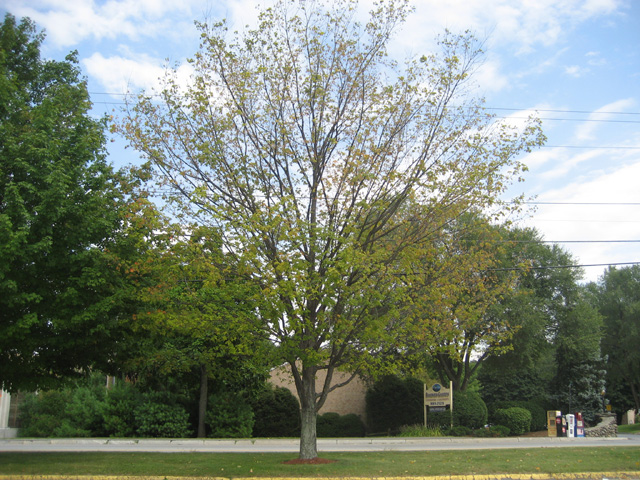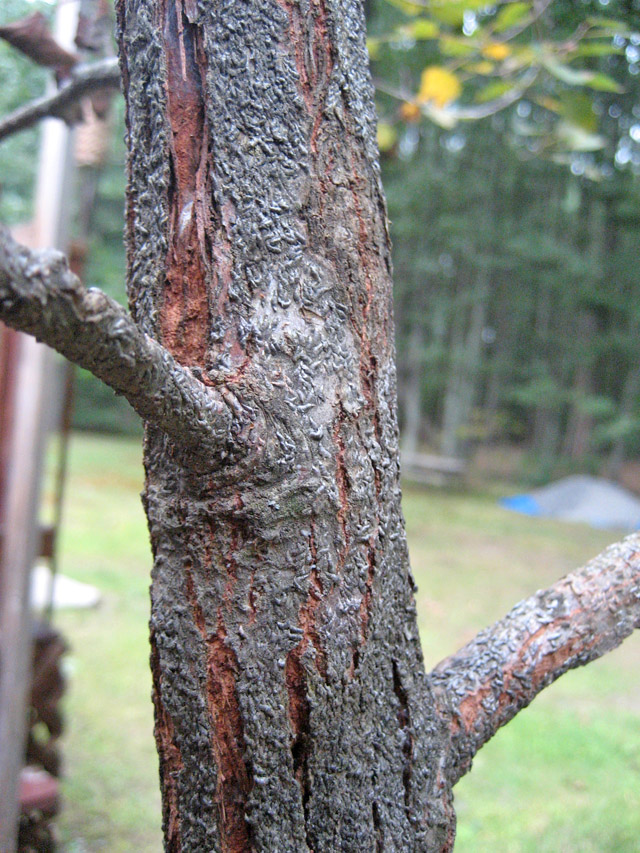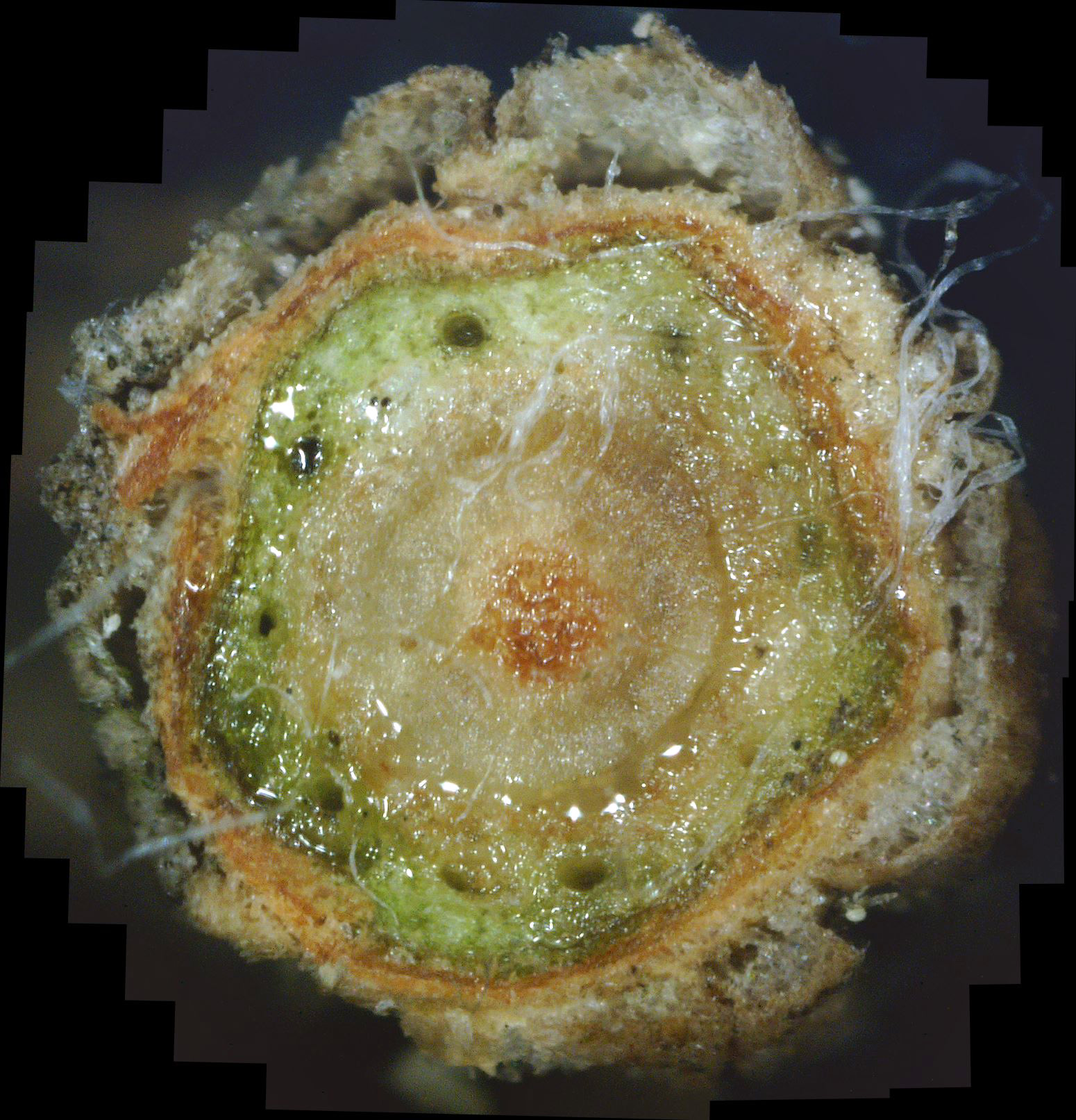
|

|
 leaf - diseased - 600dpi-A.jpg)
|

|
|
White Canker Tree & Shrub Disease |
|
Our trees and shrubs are now experiencing a new and serious disease that is slowly weakening and
killing them. This is a widespread disease, not limited to any particular geographic area.
Little is known about it, since it only seemed to make its appearance around 2003.
Yet its aggressive nature seems to overcome the natural defenses of our trees and shrubs.
How bad is it? While this disease rarely kills a tree or shrub quickly, it often causes a steady decline in their health, and could eventually kill them over many years. Furthermore, this disease seems to attack all trees and shrubs to varying degrees.
|
Sounds pretty bad, doesn't it? I'm a homeowner with an interest in growing trees and shrubs. Consequently, over the past 30 years I've planted quite a variety of them around my yard. In general, I had few problems with disease and insects during this time. In fact some of these plantings, such as my Black Russian Mulberry were never affected by any disease during this time period!
However, around 2003 I began to notice a dramatic decline in the health of plantings growing both in my yard and in my neighbor's yard. I called in state foresters, sent plant leaf samples into state plant diagnostic labs, and did research on the Internet. Nothing seemed to help. Diagnosis from the experts ranged from various insects to anthracnose to other fungal diseases. In general, the advice was to just ignore it and it would go away by itself. I did this, and one of my trees died soon after.
Not willing to see more of my plantings die, I decided to take matters into my own hand, and tried learn as much as I could about this disease. Over time I became convinced that this was a new disease that weakened the trees and shrubs, making them more susceptible to attack from insects and other diseases. And, as I was to find out, not only was this disease a local problem, but I found it throughout New England, in the midwest, and as far down as Florida! In spite of this, I've been unable to locate any information on this disease. In fact, several experts I've spoken with don't even think it exists!
Through observations of this disease on many, many trees, lots of research, and some experimentation, I've been able to characterize this disease and come up with chemical treatments that will treat it. This website consolidates all the information I've gathered on this disease, which I call White Canker (for reasons covered later). Hopefully it will be helpful to those of you who also encounter this disease on your trees and shrubs.
Because this White Canker tree and shrub disease seems to be unknown, I've attempted to amass a large body of evidence describing it, such as a detailed list of disease symptoms, fungicides that treat it, pictures of the fruiting bodies that propagate it, and pictures of the damage it does (both internally and externally). Furthermore, all this is illustrated by sets of pictures on a wide variety of trees and shrubs.The tools I used are those available to the average person. Because of that, all the picture data presented here can easily be verified. No special laboratory equipment is needed!
The best place to begin is with the document fully describing this White Canker disease. After that, check out the extensive set of pictures that show what this disease does to trees and shrubs.
If you just want to check out specific information regarding this disease, select the topic of interest from the following list:
- Disease Symptom Overview
- What the Experts Think this Disease is
- My Guess as to What this Disease is
- Why I Named this Disease White Canker
- General Diagnostic Methods
- Unaided Eye White Canker Symptoms
- My Diagnostic Tools
- Microscope Aided White Canker Symptoms
- Treating White Canker
- Factors Making White Canker Worse
- When Will It Die?
- Diagnosis Example - Blue Spruce
- Treatment Example - Blue Spruce
- A Bush that had been "dead" for Years Comes Back to Life!
- Shed Fruiting Bodies
- The Trees and Shrubs Most Affected by White Canker
- Photos of Trees and Shrubs Infected with White Canker
| About Me | Contact Me | Discuss this |